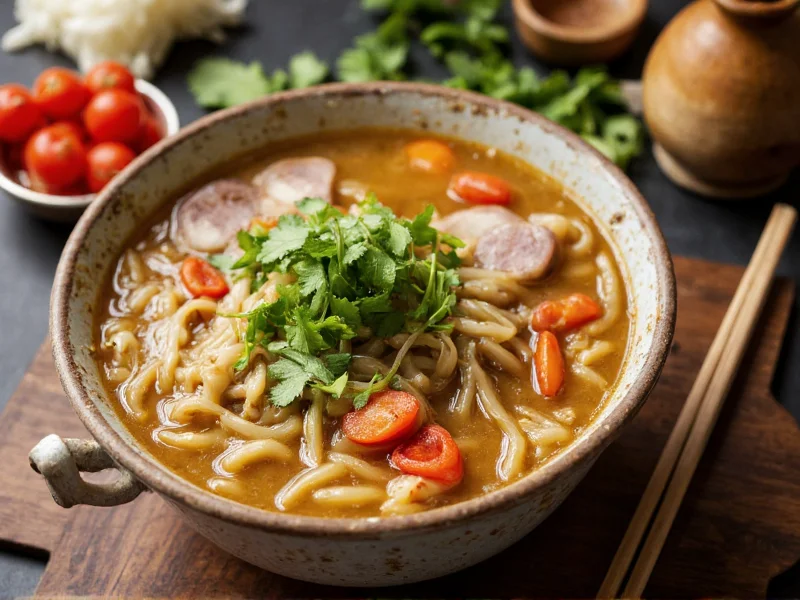When searching for pho hoa noodle soup, many diners seek to understand what distinguishes this particular style from traditional Vietnamese pho. The answer lies in its standardized preparation method, consistent broth quality, and specific presentation style developed by the original Pho Hoa (also known as Pho 24 or Pho Hoa Pasteur) restaurant in Ho Chi Minh City. This iconic establishment transformed how pho is served commercially while preserving authentic flavors that have captivated global audiences.
The Origins of Pho Hoa
Pho Hoa emerged during Vietnam's economic reforms in the early 1980s when private enterprise became permissible. Founded in 1983 at 24 Pasteur Street in Saigon, the restaurant (originally called Pho 24) pioneered a systematic approach to preparing Vietnam's national dish. While traditional pho was typically made by individual families or small street vendors with varying recipes, Pho Hoa developed precise measurements for broth preparation, standardized ingredient portions, and consistent presentation.
This innovation addressed a growing need as Vietnam opened to international visitors and urban populations expanded. The restaurant's success demonstrated that traditional Vietnamese cuisine could maintain authenticity while adapting to commercial scale. By the late 1990s, Pho Hoa had expanded internationally, bringing its distinctive style to cities worldwide and influencing how many global diners first experienced authentic Vietnamese pho.
What Makes Pho Hoa Distinctive
Several key elements differentiate Pho Hoa's approach from traditional pho preparation:
| Feature | Traditional Pho | Pho Hoa Style |
|---|---|---|
| Broth Preparation | Variably spiced, often family-specific recipes | Standardized spice blend with precise charred onion/ginger ratio |
| Noodle Quality | Often freshly made daily with variable thickness | Consistent medium-width rice noodles with specific texture |
| Meat Portions | Variable amounts depending on vendor | Standardized 3-4 oz meat portions per bowl |
| Condiment Presentation | Often self-serve from communal containers | Individual small plates with precise herb portions |
| Dining Experience | Casual street food setting | Restaurant setting with consistent service standards |
Broth: The Heart of Pho Hoa
The signature element of authentic pho hoa noodle soup remains its broth, which follows traditional preparation methods but with standardized timing and ingredient ratios. Chefs meticulously char onions and ginger before adding them to beef bones that have simmered for 8-10 hours. The distinctive clarity of Pho Hoa broth comes from careful skimming and the precise addition of spices like star anise, cinnamon, cloves, and cardamom at specific intervals.
Unlike some Westernized versions that use shortcuts, genuine Pho Hoa maintains the traditional clear broth achieved through patient preparation rather than additives. The restaurant chain's quality control ensures each location produces broth meeting these exacting standards, which explains why many consider pho hoa restaurant chain locations the gold standard for consistent pho quality worldwide.
Cultural Significance and Global Influence
Pho Hoa represents an important evolution in Vietnamese culinary history. Before its establishment, pho existed primarily as street food with significant regional variations between Northern and Southern Vietnam. Pho Hoa helped standardize Southern-style pho (served with more herbs and bean sprouts) while making the dish accessible in formal dining settings.
For the Vietnamese diaspora, Pho Hoa restaurants became cultural touchstones that provided a taste of home with reliable quality. For international diners, these establishments often served as their first authentic introduction to Vietnamese cuisine beyond spring rolls and fried rice. The success of the pho hoa restaurant chain history demonstrates how traditional foods can maintain authenticity while adapting to global markets.
Experiencing Authentic Pho Hoa
When seeking an authentic vietnamese pho hoa dining experience, look for restaurants that follow these key indicators:
- Broth that's clear yet deeply flavorful, never cloudy or greasy
- Freshly cooked noodles served separately from the broth to maintain texture
- Thinly sliced raw beef that cooks gently when hot broth is poured over it
- Properly charred aromatics visible in the broth
- Accompaniments served separately: Thai basil, cilantro, bean sprouts, lime wedges, and sliced chilies
Many establishments claiming to serve pho hoa noodle soup may not follow the original standards. True Pho Hoa-style restaurants maintain the balance of flavors where no single element overpowers the delicate broth. The meat should be tender but not falling apart, and the noodles should have a slight chewiness rather than being mushy.
Making Pho Hoa Style at Home
While replicating the exact pho hoa broth preparation requires professional equipment, home cooks can approximate the style with careful attention to detail. Start with high-quality beef bones (marrow bones and knuckle bones), simmer for at least 6 hours while skimming impurities. Char two whole onions and a large piece of ginger until blackened on the surface before adding to the pot.
The spice blend should include 3 star anise pods, 1 cinnamon stick, 3 cloves, and 1 cardamom pod per gallon of water. Add these spices during the last 2 hours of simmering. For authentic ingredients in pho hoa noodle soup, use fresh rice noodles, thinly sliced sirloin or eye of round, and serve with traditional accompaniments on the side.
Understanding Pho Hoa's Legacy
The story of Pho Hoa represents more than just a restaurant chain—it symbolizes the globalization of authentic Vietnamese cuisine while maintaining culinary integrity. By systematizing preparation without sacrificing quality, Pho Hoa demonstrated that traditional foods could thrive in commercial settings worldwide. Today, when diners search for where to find pho hoa near me, they're often seeking that reliable standard of quality established by the original Saigon location over forty years ago.











 浙公网安备
33010002000092号
浙公网安备
33010002000092号 浙B2-20120091-4
浙B2-20120091-4